Hi,
I had a good day finally beginning to have energy again. Was treated to a beautiful winter mountain sky this afternoon.


Some friends who are forming a 1770s British 33 Regiment of Foot Grenadier company came over to talk history, guns, and to drill a bit in my field. I had worked on some of their muskets and they were able to pick them up today.
There are many different styles of rasps and I've used a bunch of them. I am just going to highlight a few that I and others find extremely useful. After bandsawing off excess wood, I do 75% of my gun shaping with rasps. Folks have seen me at Dixon's and at the Kempton Gunmakers Fair shape the wrist and most of the lock panels of a squared stock blank in less than an hour using a couple of rasps and files. For sure there are always many different ways to skin the same cat but rasps really work for me given how I like to work.
First up are the standard cheap wood rasp (bottom) you can buy in a hardware store and a medium sized farrier's rasp (top). They both work very well and remove wood fast.
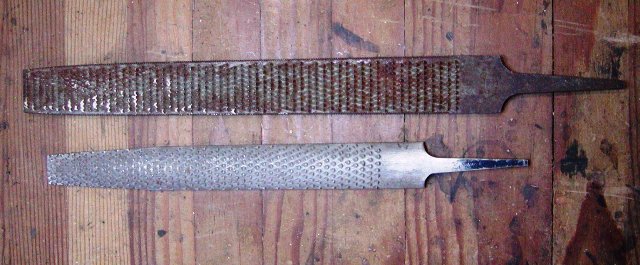
The hardware store rasps tend to dull quickly but they work. The farrier's rasp is a wood removing beast. However, the regular rows of machine cut teeth cut deep furrows in the wood that need to be smoothed a lot.
Next up are a couple of Japanese milled rasps sold by Lee Valley. I like these tools a lot for straight forward wood removal. They are sharp beasts and it is best to attach a handle to protect your hands. Unlike the previous rasps, they leave a pretty smooth surface behind.
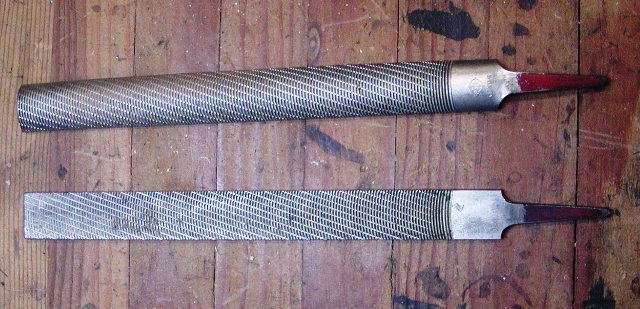
The downside is they only cut effectively in a straight forward direction. It is difficult to use them to blend surfaces using a sideways movement or roll to the rasp. You have to cut straight forward and that leaves the profile of the rasp in the stock. Stanley company makes the Surform line of rasps. These are aggressive wood removers as well and leave a fairly smooth surface behind. My example here is actually my cheese grater but if you turn the blade around it is a Surform file. These are inexpensive but they dull quickly in hardwood.
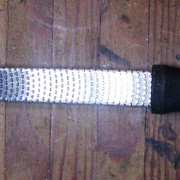
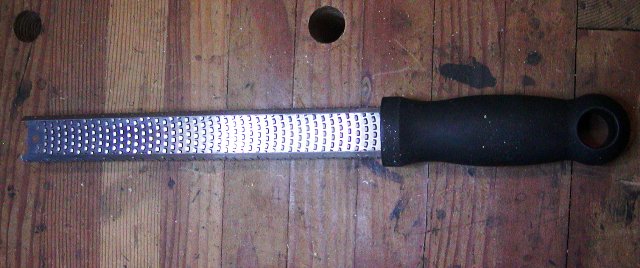
Now we get to rasps I use far more than anything else. These are my Liogier cabinet maker's rasps and gunsmith rasp.
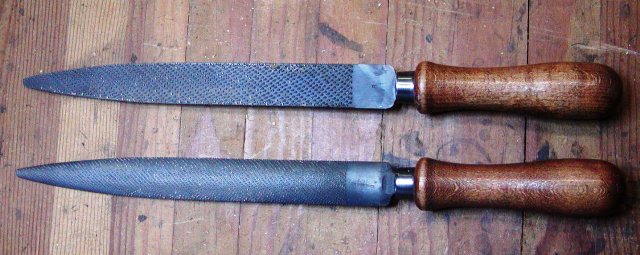
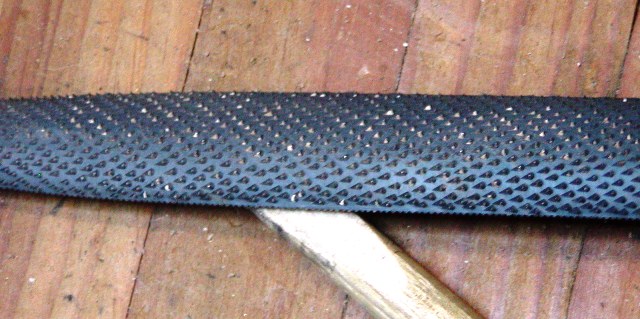
The teeth are hand cut in a relatively random pattern. Then the tool is hardened and tempered. I like the beautiful sapphire finish. The irregularly spaced teeth create a smoother finish behind and shed wood chips much better than machine cut teeth. These rasps cut quickly and smoothly. All can be purchased with coarseness of cut ranging from 1 to 15, with 15 being the finest. They replaced my old Nicholson #49 and #50 pattern maker's rasp after those were no longer made in America and the quality deteriorated badly. Liogier is not the only maker of these fine hand stitched rasps. Auriel is another.
Now here is one of my aces in the hole. The Liogier 12" gunsmith's rasp. This is a life saver. The long blade allows you to work on the combs and cheek pieces of your stock from the rear without whacking your knuckles against the end of the stock. This is a huge advantage. The narrow width is also ideal for shaping the end of the comb and the cheek piece.

I also am a big fan of Stew-Mac's Dragon rasps. These Japanese made rasps have random teeth and the sharp narrow point to the blade is incredibly useful for getting into tight spots. Mine is a fine cut and leaves a surface behind superior to a coarse file. This tool is excellent for smoothing the background around carving because of the narrow point.


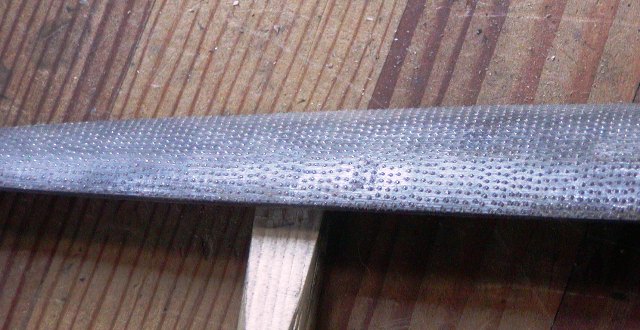
Finally, my apprentice, Maria, mentioned this week that Japanese Shinto rasps were really popular at the Canter's Cave rifle making workshop. They come in many shapes and are very aggressive cutters. However, I personally, have no experience with them unlike all the other rasps I've discussed.

dave


















